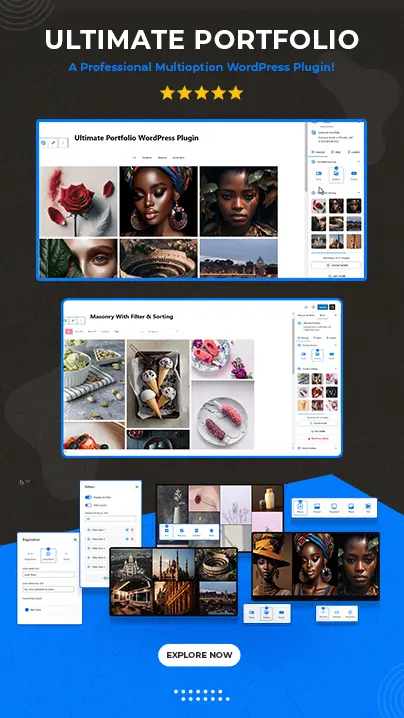
Reduce the amount of duplicate content on enterprise-level websites. Here are seven tips for scaling using dynamic, technical, and copy-based strategies.
Duplicate content can stymie SEO performance and prevent your search strategy from achieving specific objectives.
It’s also unhelpful to searchers, so search engines like Google identify other content as the better answer.
Search engines can filter out pages from top search results and include pages that may not be the desired page for your site to be ranked prominently.
Duplicate content does not always imply that someone has stolen or copied your work without your permission (although that does happen).
You may have dealers, affiliates, or others who sell your products using your content at the enterprise level.
Sites that are part of the same corporate model or feature products or services created or manufactured by the same creator or manufacturer may have content that is identical to yours.
Even if you’re not doing anything spammy or malicious, you’ll need a strategy for dealing with duplicate content on your site and on other sites.
With an enterprise site, you don’t have the option of simply updating a few pages or writing some custom tags to fix the problems.
There are several challenges for enterprise sites with potentially thousands of pages, products, services, locations, or regulated content.
The good news is that there are specific methods for dealing with duplicate content at the enterprise level.
7 Methods for Handling Enterprise Duplicate Content
- Content Usage Guidelines
- Auditing
- Tags for Dynamic Variables
- Assess the Global Template Content
- Copy with Scalability
- User-Generated Content (UGC)
- Tags That Are Canonical
#1. Content Usage Guidelines
If you own or create content and have others sell, feature, or license your products or services, you should have as much control over the content as possible.
To maintain brand integrity, you’ll most likely allow dealers, vendors, and affiliates to use descriptions and details.
However, in order to keep your site’s authority and rankings, you must have policies in place that govern what content can and cannot be used. In some cases, you’ll also need attribution rules or guidelines.
It is critical to take every precaution to prevent content that you intended to be part of the parent brand’s unique content from being “borrowed” or used.
That doesn’t mean others can’t use it, but be clear about what is free to use, what requires attribution, and what isn’t.
#2. Auditing
Determine what content on your site is duplicated from page to page and elsewhere on the internet. Within SEO tool suites and standalone tools like Copyscape, there are several excellent tools for detecting and reporting duplicate content.
Establish a regular process and routine for conducting internal site audits as well as web audits for duplicate content in order to detect any new content.
This allows you to identify any uses (as mentioned above) that are not authorized to manage or navigate.
#3. Tags for Dynamic Variables
Thousands of pages are common on enterprise-level websites.
They are not amenable to manual title tags, meta descriptions, or heading tags. Even if they did, it would take a significant amount of time and effort to write, monitor, and document the tags to ensure there is no duplication.
It is critical to create a dynamic set of tags for large eCommerce sites, lead generation sites, and brand sites that have products, blog posts, tech specs, and large sections and databases of user-facing content.
In the past, this meant an SEO collaborating with a developer to create formulas for tags based on database information. Most modern websites use content management systems that allow tags to include dynamic variables and syntax.
Use dynamic tagging and variables to scale the content of tags and headings to ensure they are unique and as relevant and specific to the page content as possible.
#4. Assess the Global Template Content
The more header, footer, and other global page content you have on each page, including navigation and sub-navigation, the more unique body content you’ll need.
This is critical if you’re aiming for a best practice of no more than 20% duplicate content per page, plus or minus.
This is especially important on pages with little copy or that aren’t long-form content pages.
Header copy, link text, and footer copy that is the same on every page or within specific sections or content types are overlooked.
Don’t spell out every link on every page in a mega menu if you don’t have to.
If you don’t have to include a lengthy disclaimer in the footer of every single page, don’t. Look for ways to reduce global content and understand that if you must have a lot of it, you will need to have more body content to compensate.
#5. Copy with Scalability
This is the most difficult enterprise duplicate content treatment or prevention method. Copy scaling can be time-consuming and difficult.
Get stakeholders on board, and if you can, I strongly advise you to do so.
I worked with a restaurant chain with about 100 locations across the country, and it took some time and effort, but we were able to get every restaurant’s page on the site to have at least 80 percent unique content.
In addition, we were able to divide the pages into sections with unique content.
That was a game-changer for us, allowing us to achieve top rankings in local and traditional searches across multiple markets. We could even compete against multiple restaurants in the same market, stacking rankings at the top and avoiding Google filtering.
Work with content creators, franchisees, copywriters, UX designers, and developers to find creative ways to create unique copy and content for each location, if possible.
Start with categories or product lines to demonstrate the value of products and eCommerce.
As products become more specific and technical, use dynamic content blocks (similar to dynamic tags mentioned earlier) to factor in more detailed copy per page.
#6. User-Generated Content (UGC)
Look for ways to incorporate user-generated content in addition to scaling content within internal resources.
This can include incorporating reviews (if rendered as page content), testimonials, FAQs, forums, and other content that helps to offset duplicate content from page to page while also providing new, distinct copies about that specific HTML topic.
As long as there isn’t a heavy need for moderation, legal review, and other gatekeeping steps that place a burden on enterprise-level operations, this can create an opportunity for scale with fewer internal resources.
#7. Canonical Tags
Canonical tags, which can be used as a last resort or as the first line of defense, can be a great solution for enterprise sites dealing with duplicate content.
They do, however, necessitate a more advanced understanding of their application as well as the risks associated with incorrect logic and implementation.
Canonical tags should be used in any situation where pagination occurs (as opposed to lazy-loading, AJAX, and infinite scrolling scenarios, which can still include canonical use and have their own indexing risks).
In any situation where you have duplicate content on your site on purpose, use canonical tags to point to the page you want to rank highly.
By being clear about your duplicate content situation, you can aggregate link value and visibility for one page.
Having one page prominently ranked as opposed to the wrong one (that you don’t want) or none at all is unquestionably advantageous.
When it comes to other sites’ pages, you can also link back to the original across domains to ensure proper credit and attribution are given.
Even if you are unable to obtain the canonical implementation, try to obtain a link back to the source as attribution.
Conclusion
The scale, size, and scope of related companies or entities allowed to use the same copy or have relationships that aren’t always manageable present unique challenges for content management and strategy on an enterprise site.
You can reduce the amount of duplicate content or manage it in ways that give you control over the situation and the pages that receive value by using dynamic, technical, and copy-based scaling strategies.
